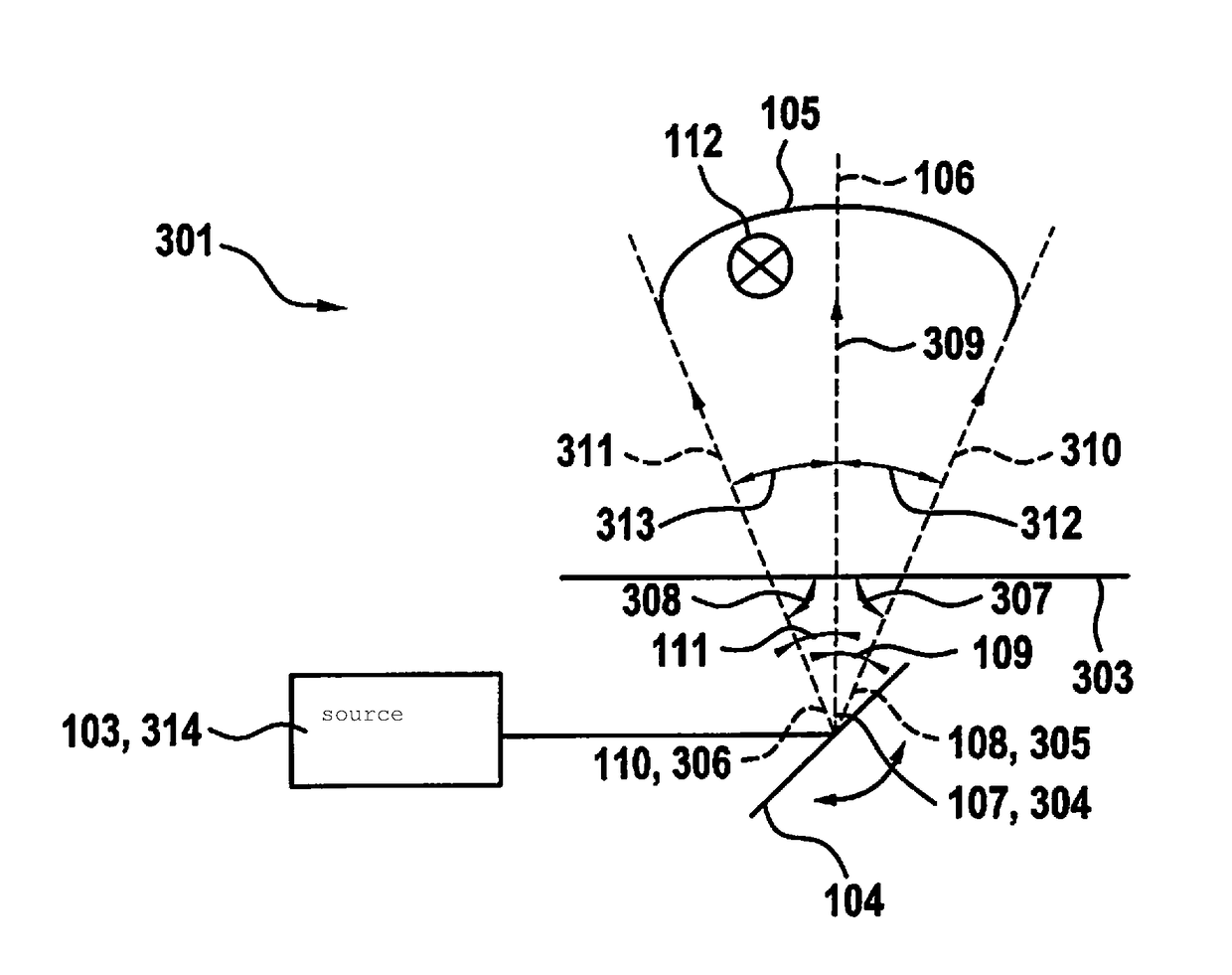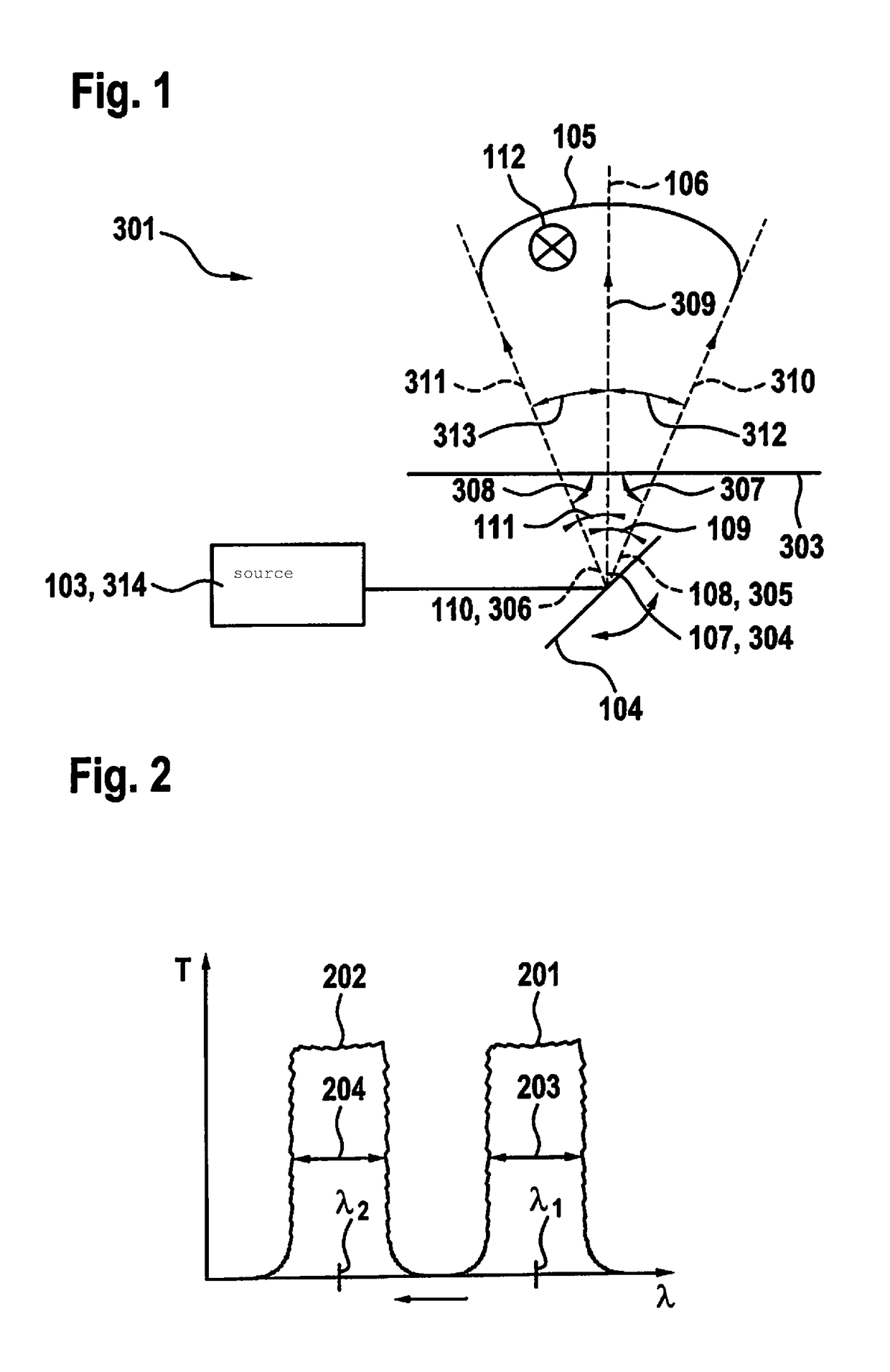Lidar sensor for detecting an object
- Summary
- Abstract
- Description
- Claims
- Application Information
AI Technical Summary
Benefits of technology
Problems solved by technology
Method used
Image
Examples
Embodiment Construction
[0043]FIG. 1 shows the structure and beam path of a transmitting unit 301 of a LIDAR sensor according to one embodiment variant of the present invention. Transmitting unit 301 includes a source 103 or 314, a deflection unit 104 and a transmit filter element 303. Line 106 marks the orientation of the optical axis of transmitting unit 301 into the sensing region. The sensing region is depicted two-dimensionally in the example. It spans an angular range 105. The sensing region may also be three-dimensional and be spanned by a solid angle.
[0044]Electromagnetic radiation may be emitted by source 103 or 314. The source may be designed as a laser 103 or 314. The emitted electromagnetic radiation strikes a deflection unit 104 and is deflected by the deflection unit along various directions into the sensing region. The electromagnetic radiation is deflected at various angles into the sensing region. The deflection may take place, for example, along deflection directions 107, 108 and 110. The...
PUM
 Login to View More
Login to View More Abstract
Description
Claims
Application Information
 Login to View More
Login to View More - R&D
- Intellectual Property
- Life Sciences
- Materials
- Tech Scout
- Unparalleled Data Quality
- Higher Quality Content
- 60% Fewer Hallucinations
Browse by: Latest US Patents, China's latest patents, Technical Efficacy Thesaurus, Application Domain, Technology Topic, Popular Technical Reports.
© 2025 PatSnap. All rights reserved.Legal|Privacy policy|Modern Slavery Act Transparency Statement|Sitemap|About US| Contact US: help@patsnap.com



